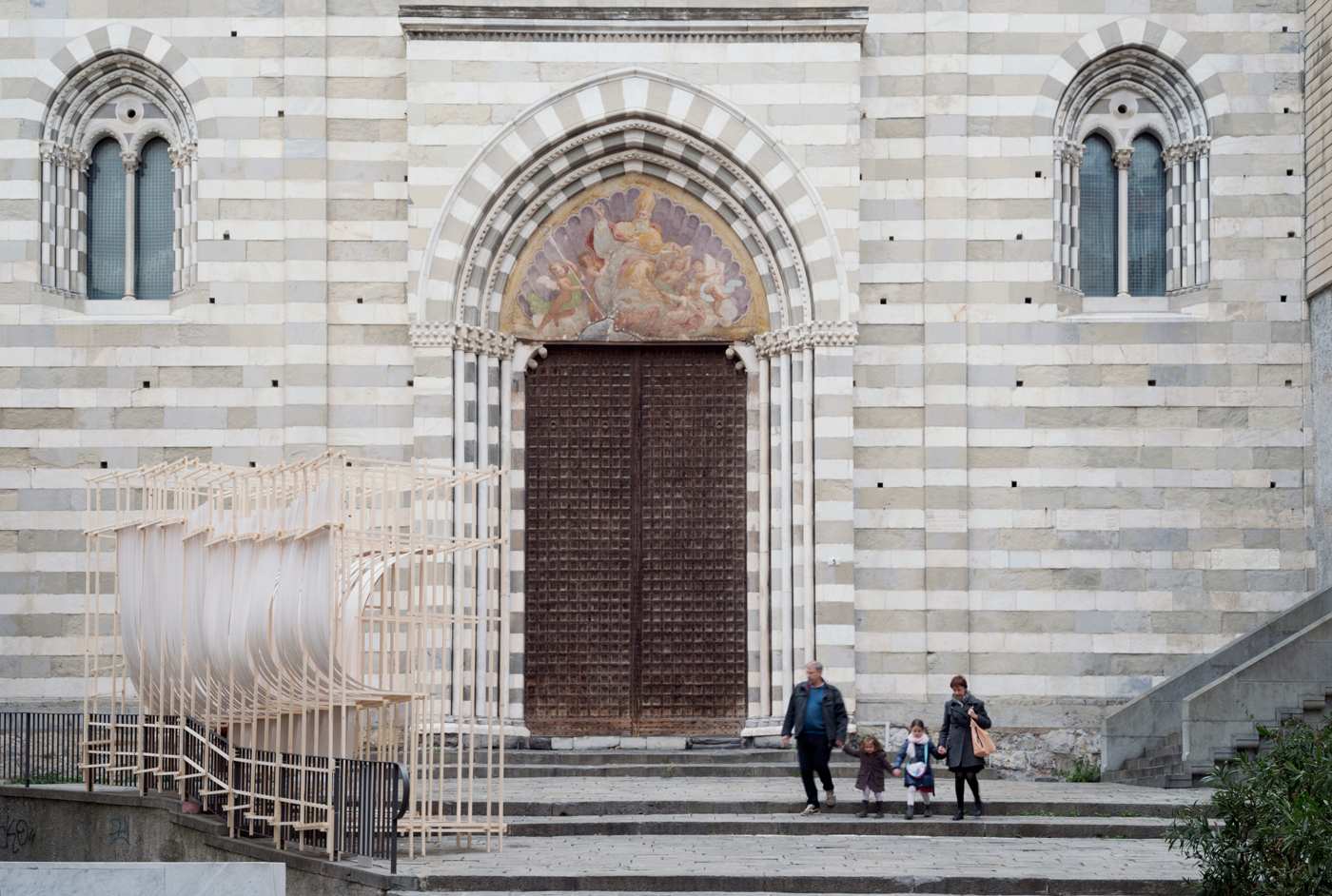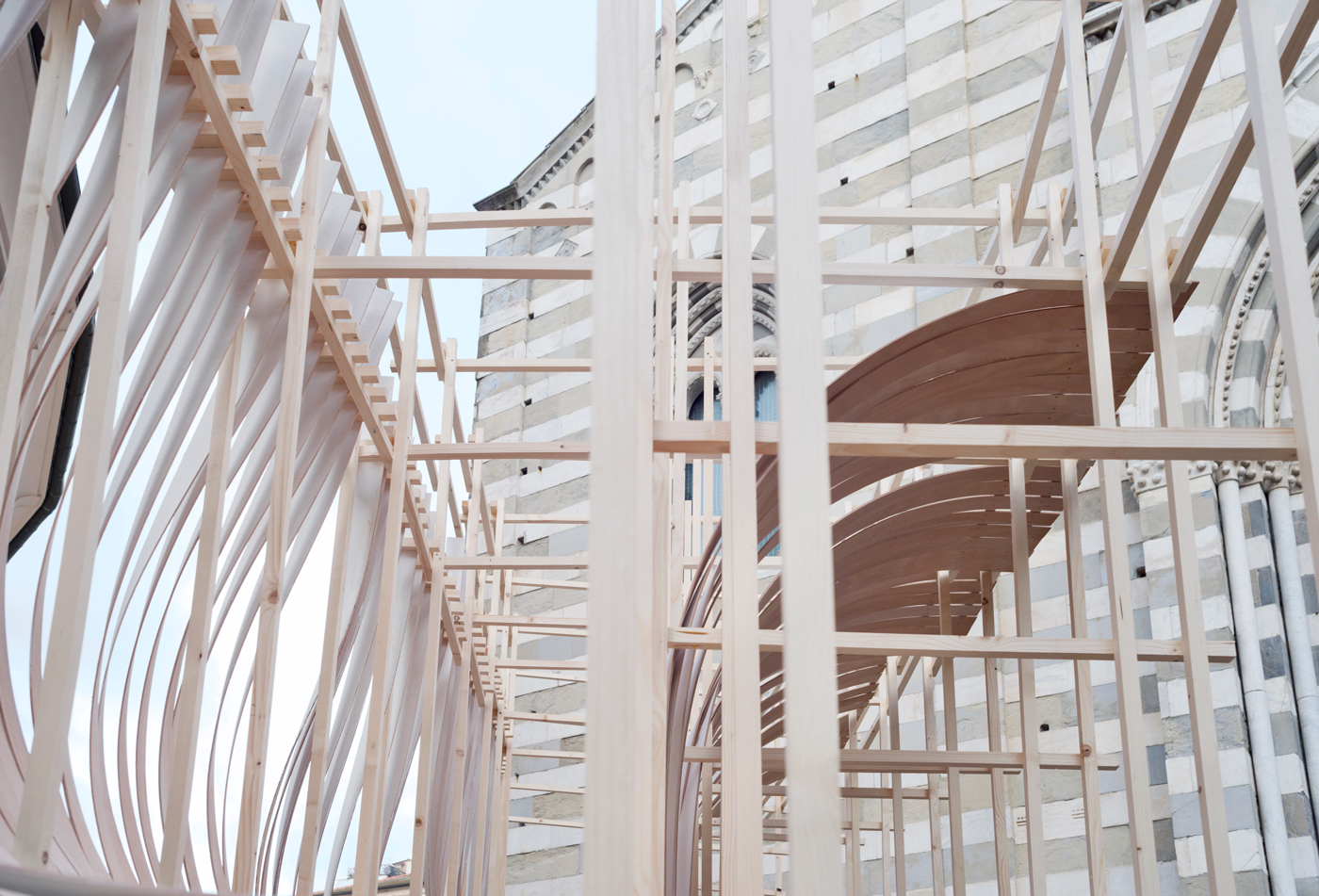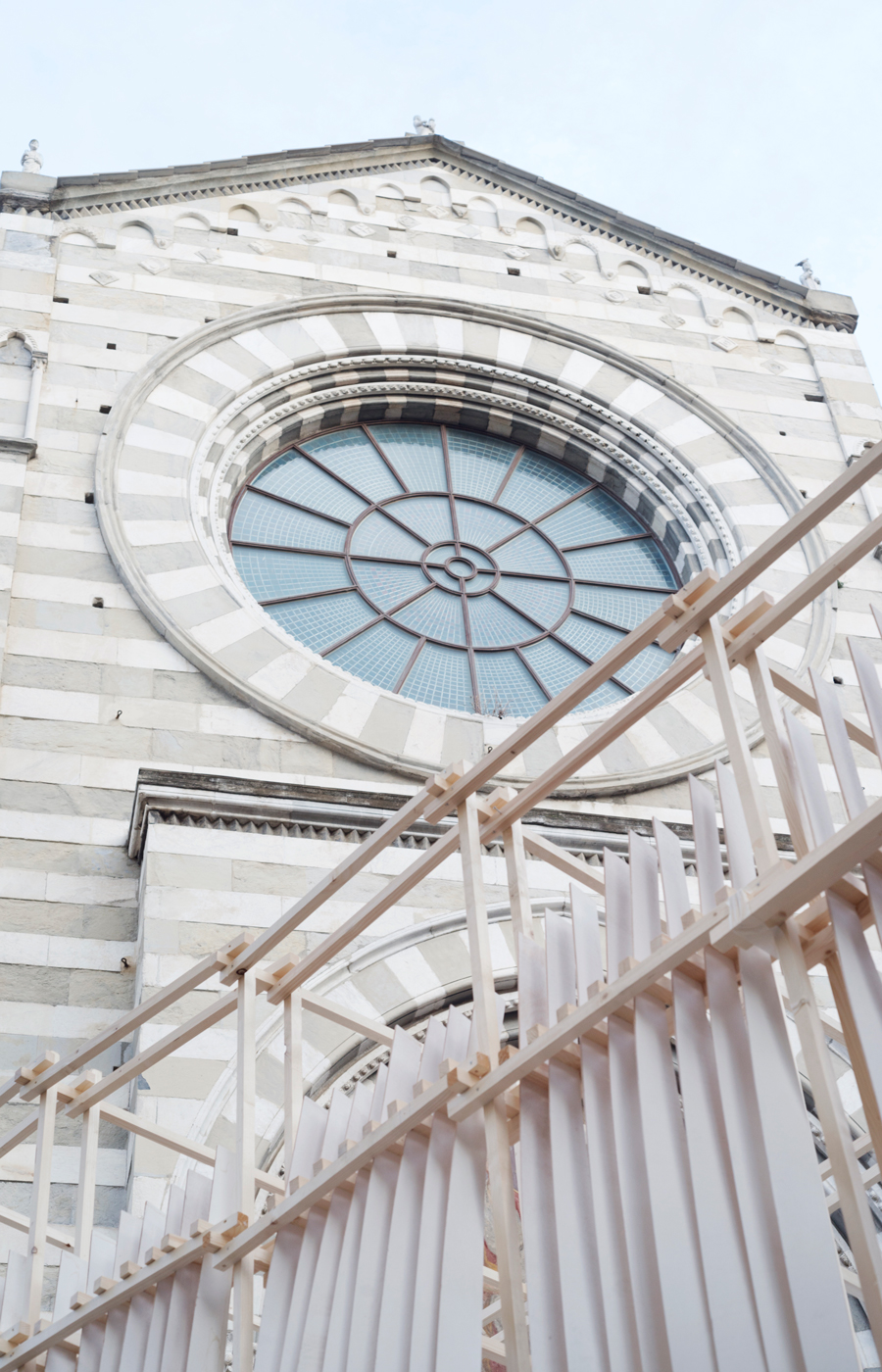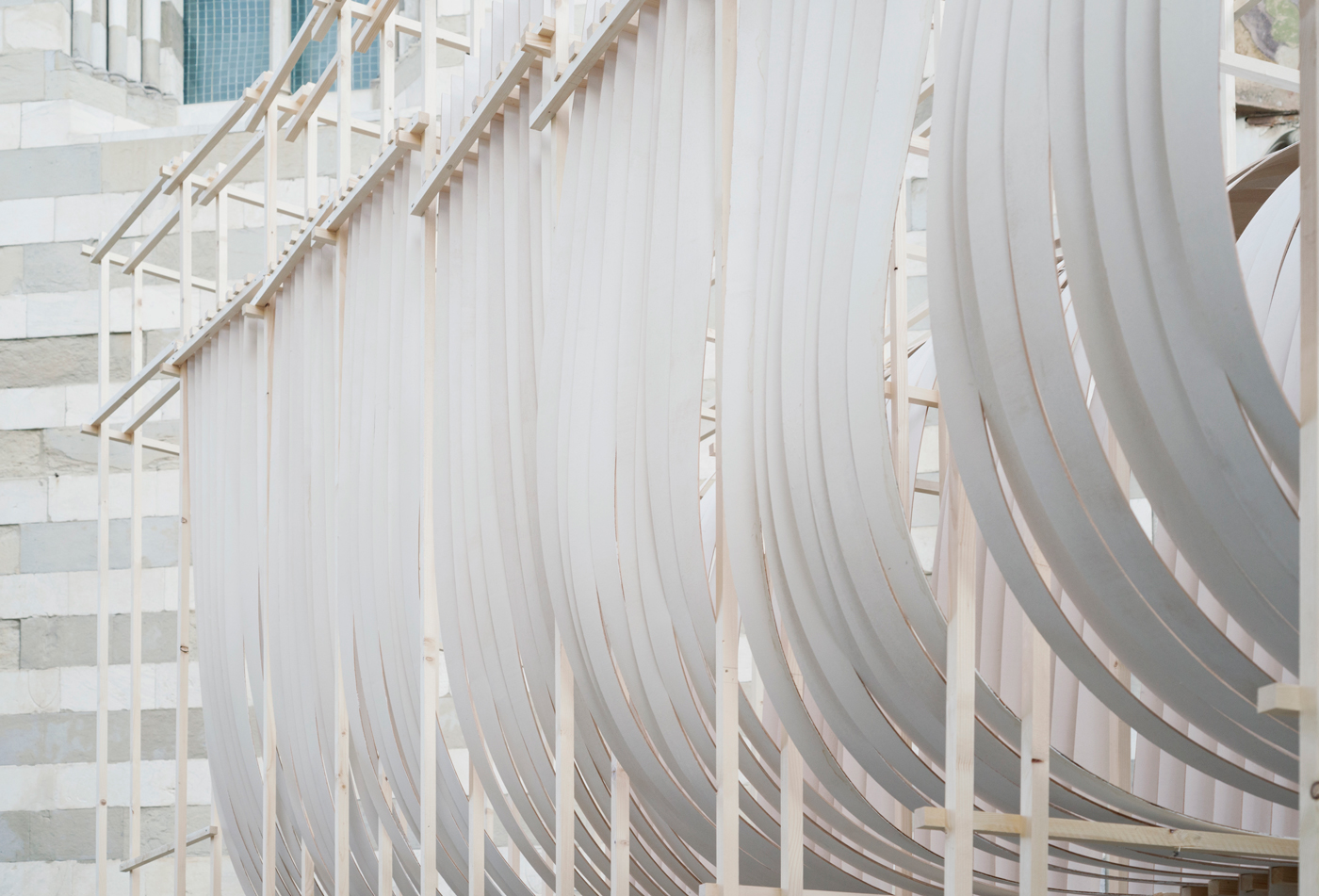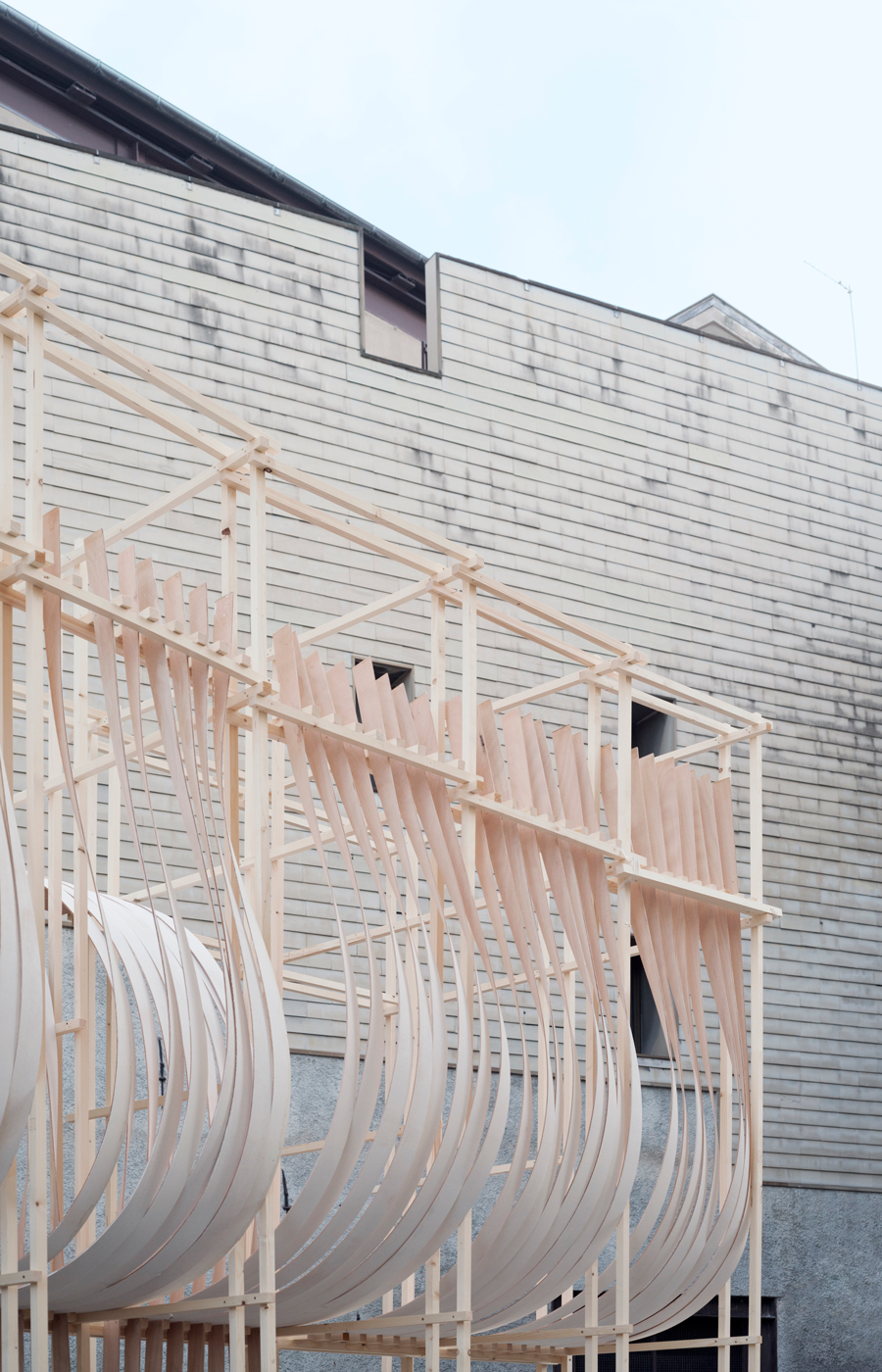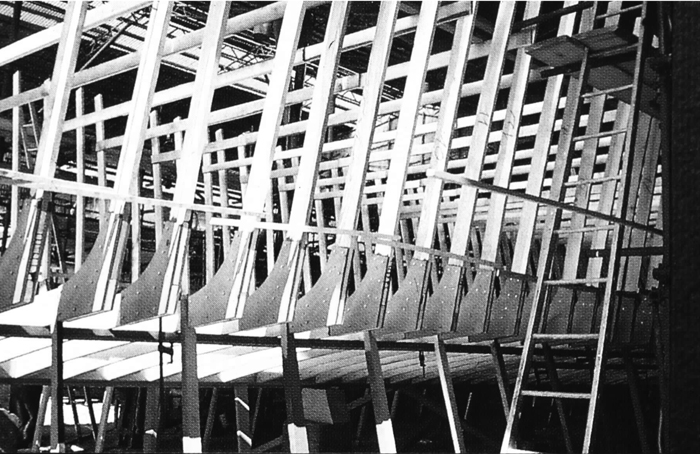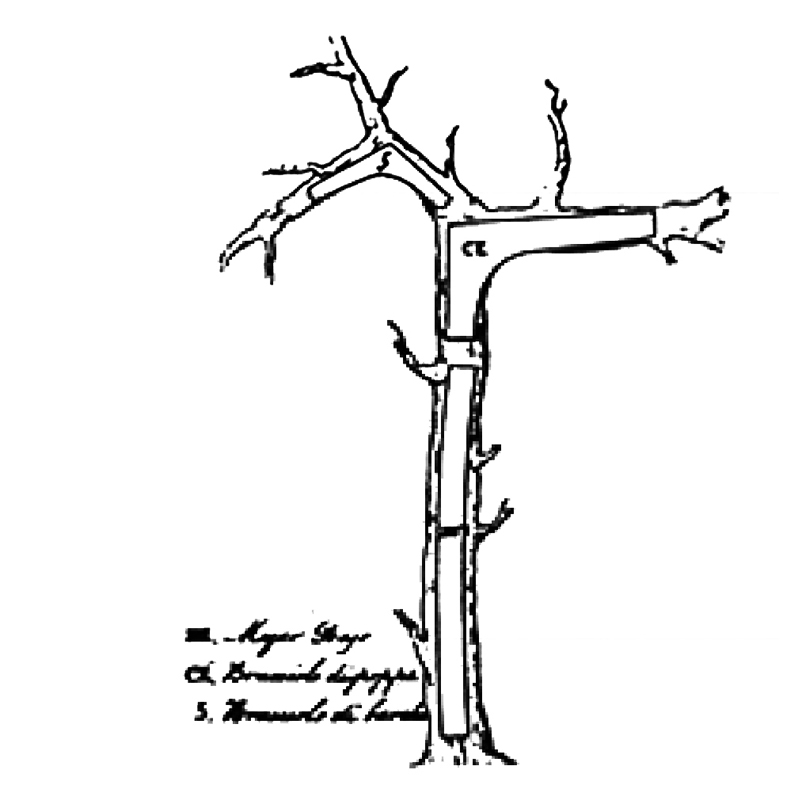Bent!
Naval construction / urban spectacle
For a period of four days, “Bent” brought back ship building into the city of Genoa under the form of an architectural participative experiment: bending wood into an inhabitable structure, reminiscent of naval craft, that creates a dialogue between the medieval urban fabric of Genoa and its historically novative attitude towards boat making
RESUME
- Architectural experiment ran between architects, academicians and students under the form of a 4-day long workshop.
- The theme emanates from the fact that Genoa, a city who’s prosperous past is bound to the sea, seems to, today, struggle to relate to the coast.
- Boat making has been a key industry in the city since centuries and the city partially owes its prosperous past to the expertise and knowledge locally developed in naval architecture.
- Boat making used to occur in the inner urban fabric, and on the coast. Today it happens behind closed doors, secluded from the inhabitant.
- The intervention aims to bring back, for four days only, boat making in the old urban fabric of Genoa as a manifestation of the past and to question Genoa´s present relationship to the littoral.
- Naval construction as a urban spectacle.
- Architecture and building have plenty to learn from its naval counterpart: a great understanding of wood as a sophisticated material, the construction of complex geometries, the management of fluxes, the use of complex spaces.
- In the urban context of Piazza Negri, the intervention is designed to alter to daily path of people crossing the square and to raise the awareness of it´s particular and unique position within historical Genoa, as a hinge between the skyline of the hearth of the city with the main palaces and churches and the opposite skyline of the oldest implementation of the city where Genoa belong to the sea.
- The installation is an elevated path, which leads to two distant terraces oriented towards the two city views. The two wooden porous bent surfaces guide the user and slowly reveal both sceneries.
INK
The city: matter between land and sea
Genoa is a city articulated along the coastline, one that has constructed its urbanism and culture throughout its history on a symbiotic relationship to the shore.
Two environments, seemingly adversaries, here interact with one another, the limit between the city and the sea is not the one of the common shoreline one that clearly demarcates a shift, highlighting a edge between two realities. Here the line is blurred, both geographically and culturally, Genoa is both land and sea, urban and marine. In Genoa, the architecture is either static, strong, mineral and rectilinear, as in its historical urban fabric; or light, dynamic, wooden and curved, as in its naval counterpart.
In this context, the vessel itself is an architectural dispositive that enables spatial occupation on the surface of the sea; it has been the object of relentless technological research and innovation and discoveries. Traditionally both its making and its use have driven the activity of Genoa and, indirectly, shaped the quality of its inner urban space. Aren’t the ship and its construction, both as space and event, the cultural aspect that most strongly questions the ambiguous relationship between land and sea?
Once deployed along its coastline, shipyards have been here driving the economy, the knowledge and the culture of the city. Shipbuilding has for centuries been embedded within the city fabric regulating its life; the streets smelled of wood, the hammers of the carpenter’s dictated the daily life rhythm, logs would occupy narrow alleys…
Today, after an industrial past in which Genoa has had to turn its back to the sea, the core of Genoa is longer the coast but its inner centre, the morphology of the city has changed and shows signs of ambiguity in how it relates to the shore. Shipbuilding, however, has not disappeared, it is still at the heart of the economy, but its industry has become hidden, the shipyard has become an economic drive and has lost its theatrical quality of urban spectacle, it is now segregated from the urban.
“Bent” as the linking system.
The workshop was the occasion to link the sea into the city fabric under the form of a cultural and constructive event. Rather than bringing the city towards the sea, the construction of an architectural installation reminiscent of naval constructions represents an attempt to bring the sea back into the urban fabric.
CONSTRUCT
The shipbuilding: the historical attitude and “Il maestro d’ascia”
A ship, because of the complex conditions in which it needs to exist and operate, is a particular or unique construction. It uses materials and techniques, which have been developed and improved over centuries. Today, technologies developed in naval architecture are often used to the construction of buildings on land. The timber of the boat, a thin surface that separates water from air, has two purposes: the hydrostatics (the ability to remain afloat – buoyancy) and hydrodynamics (the flow of water around the ship).
What can one learn from the craft of boat making? What does it mean to bend a wooden profile; are there other ways to work with layering and lamination? How are the techniques and materials used in ship-building useful to construct a physical building within the space of the city?
For this experiment we worked with two distinctive and interwoven systems: primarily a wooden matrix, consisting of an orthogonal assembly of timber studs, it enabled us to construct a volume which will rest or lean on the stones of the city, both streets and buildings. Secondly, on the primary structure a thin curved and porous surface composed of bent timber profiles, assembled as to create a continuous skin reminiscent of the shell of the vessel and the boundary between air and water.
Bending wood implies embedding or storing energy, mastering the force that a material can induce from its own composition, in this case the fibre. We observed and employed the geometry in which a wooden stripe settles, as in other types of form-finding processes. The fibre of the wood dictates the shape taking advantage of its bending properties.
INHABIT
Naval architecture towards production of space
What happens when a boat is no longer in the water? What kind of space articulates around its curved surface? What architectural and spatial attributes could such a complex surface induce into a public space?
The boat is a device to travel, but essentially, it is being inhabited. It accommodates daily life and most of its necessities, that makes it a spatial dispositive no less complex than the one of a construction on firm land.
The initiative wasn´t to faithfully reconstruct a ship that could navigate in water, but rather, through an understanding of the materiality and techniques of naval craft, to test and explore what architectural qualities it can provide in the public space of Genoa.
The orthogonal timber assembly mainly helped us to strongly and steadily connect to the existing constructed condition of the place, carefully selecting anchor points and designing the accurate details to lean on the century old stones. The curved wooden stripes, individually bent on the structure one next to another formed a surface, continuous or fragmented, opaque or porous to eye and light, enabling a complex game of creating interior and exterior spaces and of which the ergonomic curves will relate directly to the body.
These architectural qualities create a relationship to the public space, as an installation which activates, modify a context, interact and interfere with its users.
The sharing knowledge: a participatory event
Set up as a pedagogical event, the experience merged students, architects and academicians of both Genoa and abroad into an enterprise of both design and making, transforming the public space into an event space. In the space of 4 days, students acted as designers, builders and artists, and will perform an architectural and naval urban spectacle.
Category:
Location:
Museo di Sant’Agostino – Genoa (Italy)Status:
BuiltSize:
30 sqmProject Team:
Edouard Cabay and Margherita Del Grossowith Sophia Bengebara, Fabio Berruti, Martina Callegaro, Giacomo Cassinelli, Pauline Charles, Francesca Garibaldi, Mattia Galati, Matteo Guidi, Anna Positano, Annalisa Puppo, Dereck Raubach, Andrea Silvestri, Greta Solari, Giulia Zappia
Organised by:
New Generations Festival, GenovaPromoted by:
Ordine degli Architetti PPC della Provincia di Genova e la Fondazione Ordine degli Architetti PPC della Provincia di GenovaPhoto& Video:
Anna PositanoDate:
2015


